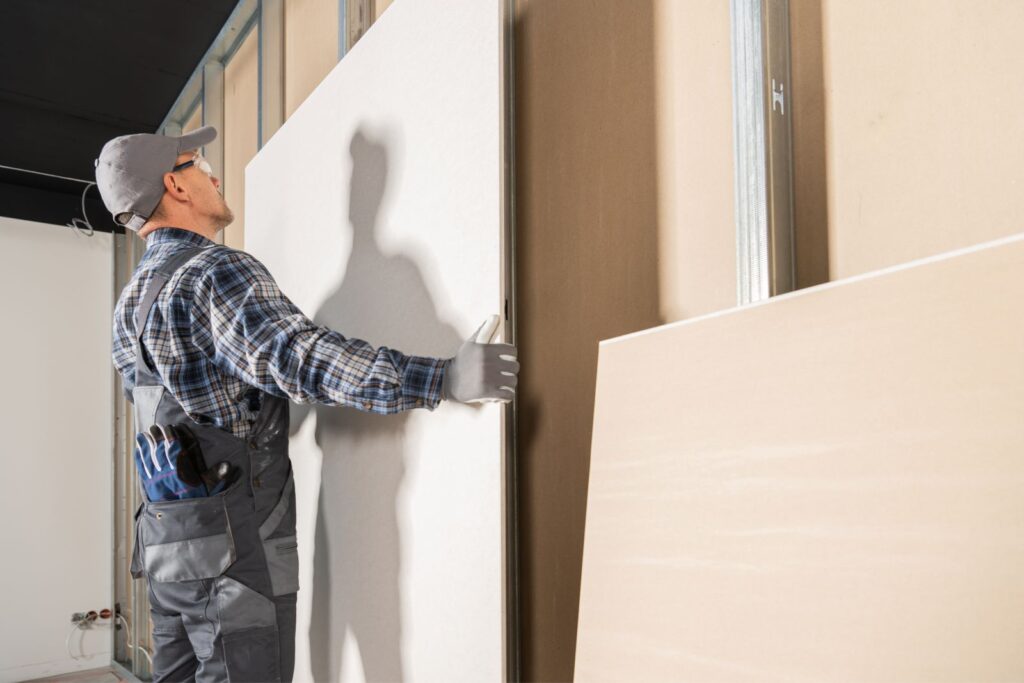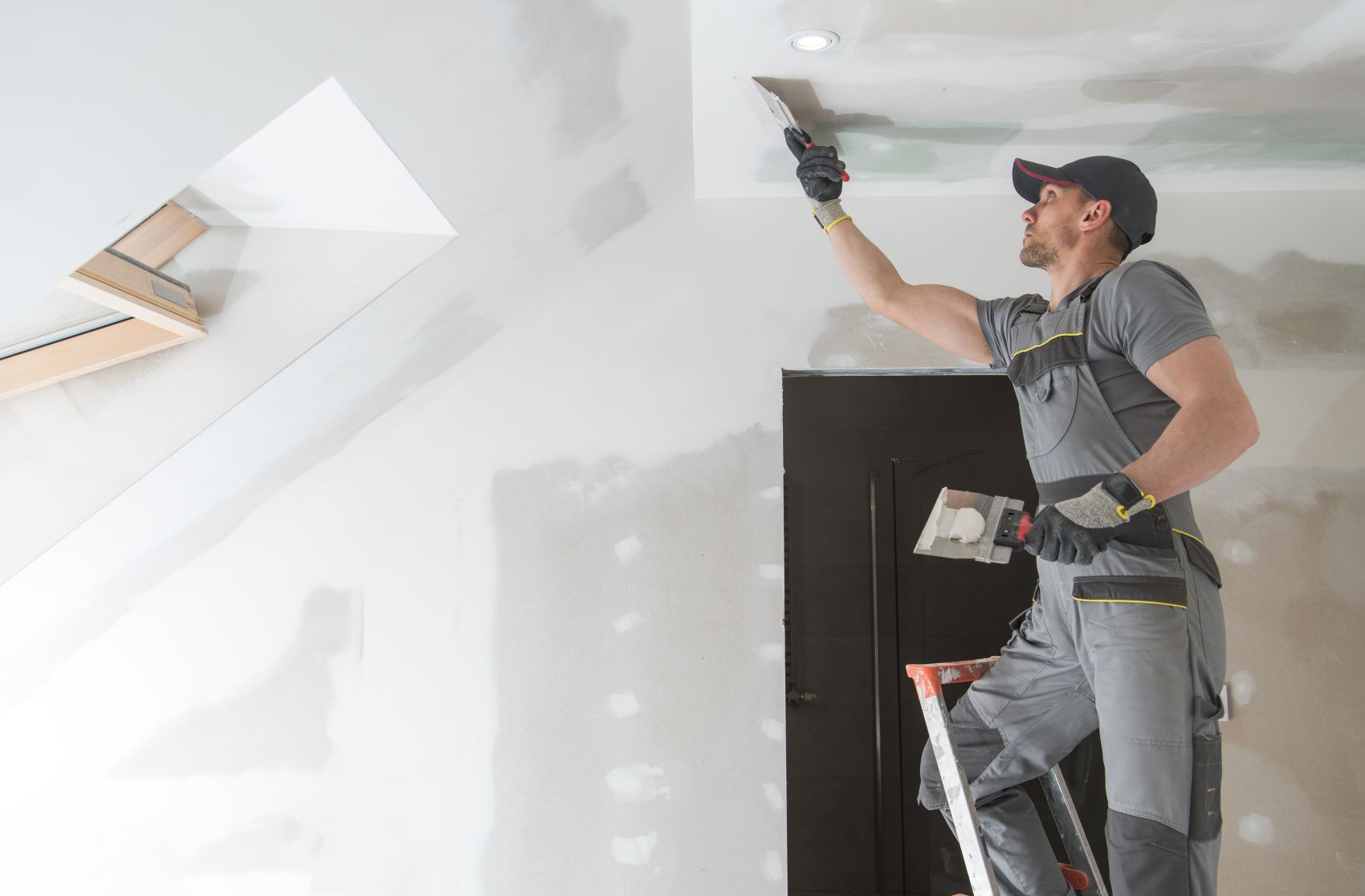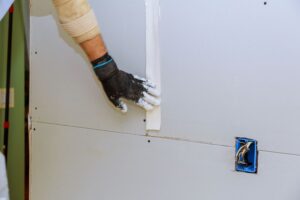Drywall may be the go-to for modern interiors, but when it comes to elevating your wall’s look and texture, many Escondido homeowners find themselves asking: “Should I plaster over my drywall?” You’re not alone in wondering! And let’s be honest—between conflicting YouTube tutorials, old-school contractor opinions, and trendy Instagram finishes, the myths pile up fast.
Don’t worry—we’re here to cut through the noise. Whether you’re dreaming of a smooth Venetian finish or trying to fix up a not-so-pretty drywall texture, this guide will break down everything you need to know. We’ll cover what works, what doesn’t, and how to avoid the pitfalls of plastering over drywall.
And since we’re all about walls done right, this post is brought to you by the team at SGP Drywall, your friendly neighborhood experts in all things walls—from drywall finishing techniques to high-end plaster finishes.
Let’s get myth-busting.
Myth #1: You Can Plaster Over Any Drywall Without Prepping It
If there’s one thing we hear way too often, it’s this: “Just slap the plaster on; the drywall will hold it.” Yikes.
Fact: Plastering over drywall requires serious prep. If you don’t properly seal, sand, or prime the surface, your gorgeous new plaster will bubble, flake, or fail to adhere altogether. Whether you’re going for a full skim coating of drywall or something more decorative, drywall preparation tips are key to success.
That includes:
- Cleaning and deglossing painted drywall
- Removing any loose or textured finishes
- Priming with a bonding agent or plaster-specific primer
Plaster is like that classy dinner guest—it expects a clean, well-set table. Don’t rush the prep!
Myth #2: Skim Coat and Joint Compound Are the Same
Many DIYers think skim coating is just another way to use joint compound. And while they can overlap, they’re not twins.
Fact: A skim coat is a super-thin layer of compound (or plaster) applied to smooth out imperfections. Joint compound, on the other hand, is typically used for taping seams or patching holes. Yes, you can use joint compound for skim coating, but plaster is often preferred for long-lasting, durable finishes—especially when you’re going for a full plaster finish on drywall.
In short: not all muds are created equal. Choose the right material for your desired finish.
Myth #3: Plastering Over Drywall Adds Tons of Thickness
Some homeowners skip plaster entirely because they fear the final result will make their walls thicker—and mess with trim, outlets, or crown molding.
Fact: A standard plaster skim coat over drywall only adds about 1/8″ to 1/4″ of thickness. That’s thinner than your favorite tortilla. Unless you’re doing a thick Venetian or decorative texture, you’ll rarely run into clearance issues.
So don’t let that little myth scare you away from smooth, elevated walls.
Why Even Plaster Over Drywall? Here’s the Case For It
Let’s get into the why. Why go through the trouble of plastering over drywall in the first place? Good question.
1. Aesthetic Upgrades
Want that ultra-smooth, European-style finish? Or something more textured and artisan? Plaster gives you a level of polish that other drywall finishing techniques alone just can’t match.
2. Durability
Plaster creates a tougher surface. It’s more resistant to dings and dents compared to standard painted drywall. It also helps seal out minor moisture and dirt.
3. Sound Dampening
Due to its density, a plastered wall can reduce sound transmission—a significant bonus in bedrooms, offices, or shared walls.
4. Modern Updates to Old Walls
If you’ve got older drywall that’s been patched to death or shows waves and flaws, a plaster finish is like giving it a fresh new skin.
The Right Way to Apply Plaster to Drywall
We’re all about doing things the right way—especially when you want results that last. So here’s how the pros approach applying plaster to drywall:
Step 1: Surface Inspection
Check for major imperfections like dents, cracks, or bubbles. Drywall resurfacing is only successful if the base is stable.
Step 2: Remove Texture
If your walls have knockdown, orange peel, or popcorn textures, those need to be sanded or scraped down first.
Step 3: Prime
Use a bonding primer (like PVA or Blue Grit) that ensures adhesion between your drywall and the plaster.
Step 4: Skim Coat Application
Apply one or two ultra-thin layers of plaster or joint compound using a wide drywall knife or trowel. Smooth it out like frosting a cake—just way less delicious.
Step 5: Sand and Finish
Once dry, sand carefully using fine-grit paper. Want that smooth drywall surface you see in magazines? This is the step that gets you there.
Updated Drywall Finishing Trends: Why Skim Coating Is In
In the age of minimalist design and clean interiors, skim-coating drywall has made a serious comeback. More Escondido homeowners are skipping heavy textures and opting for flat, even walls that reflect natural light beautifully.
Some are even pairing this with color-tinted plasters or lime-based finishes to add personality without overpowering a space. So yes, even the most “boring” drywall can become your home’s showstopper.
When NOT to Plaster Over Drywall
While plastering over drywall is generally safe, there are a few cases when you should pause:
❌ If your drywall is water-damaged or moldy:
Plastering over it is like putting lipstick on a rotten tomato.
❌ If the drywall isn’t properly anchored:
Loose panels or warped sections can lead to cracks down the road.
❌ If your budget is tight:
Plastering is more labor-intensive than standard painting or texturing. Know what you’re signing up for.
Pros and Cons of Plaster Over Drywall: A Quick Recap
Let’s break it down.
| Pros | Cons |
|---|---|
| Beautiful, smooth finish | Higher labor costs |
| Improved wall durability | Requires surface prep |
| Better sound dampening | Not ideal for textured preferences |
| Modern, upscale aesthetic | Time-consuming process |
Ready to Elevate Your Drywall Game?

Whether you’re dreaming of smooth, buttery walls or you’re tired of staring at uneven seams, the experts at SGP Drywall can help. We’ve worked with everyone—from homeowners with fixer-uppers to designers craving perfect finishes.
Our team brings top-tier craftsmanship and a love for detail to every job. So, if you’re considering a plaster finish on drywall, need help with drywall resurfacing, or just want to talk texture—we’re here for it.
Let’s transform your walls the right way.
Reach out to SGP Drywall today for a personalized estimate and expert guidance.
FAQs: Things You’re Still Wondering About Plastering Over Drywall
Can you use plaster to hide seams between drywall panels?
While plaster can help mask minor imperfections, it won’t replace proper taping. You still need to tape and mud seams before applying a skim coat of plaster. Think of plaster as a topcoat—not a substitute for correct drywall installation techniques.
Does plaster stick better to unpainted drywall or painted drywall?
Plaster generally adheres better to unpainted drywall, especially when primed with the right bonding agent. If your drywall is already painted, make sure to rough it up with sandpaper and apply a suitable primer first. Otherwise, adhesion issues could arise.
Can you apply decorative textures over plastered drywall later?
Yes! Once your plaster is cured and sealed, you can apply additional textures using specialty products or even go back to joint compound. Just keep in mind that sanding a plaster surface for retexturing can be messy and time-consuming.
Thinking About Starting Your Next Project? Start Local.
If you liked this deep dive into plastering and drywall, don’t miss our next article: Hiring Local: Why Choosing an Escondido Drywall Contractor Matters. We’ll break down the real value of choosing trusted pros right in your neighborhood—especially when it comes to navigating Escondido’s unique building quirks.




